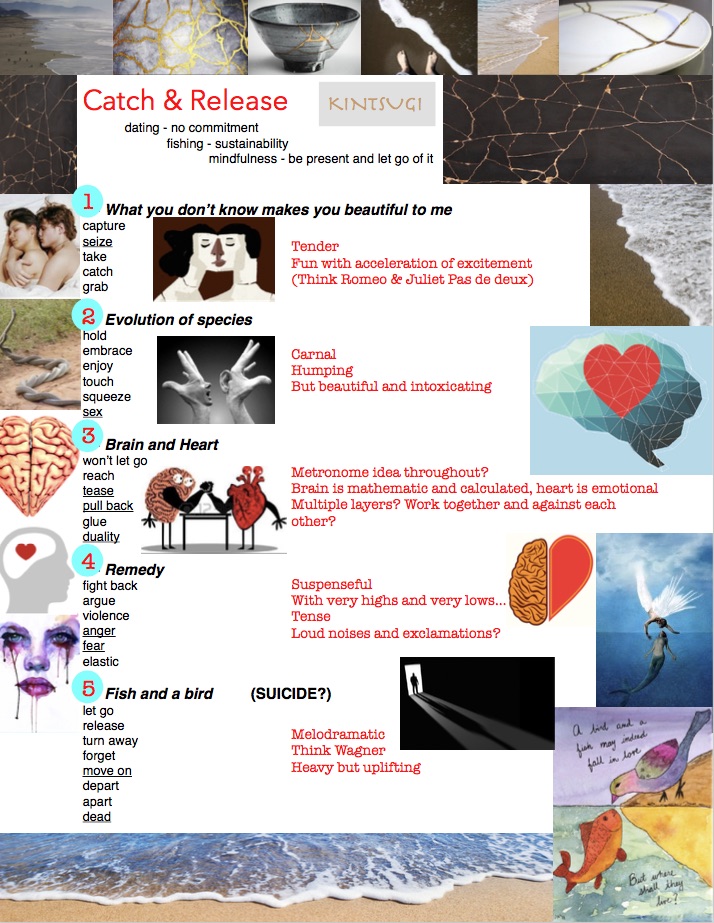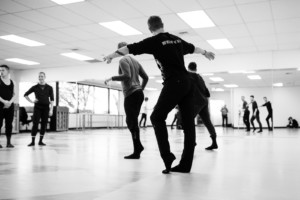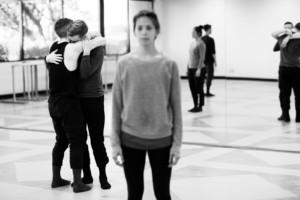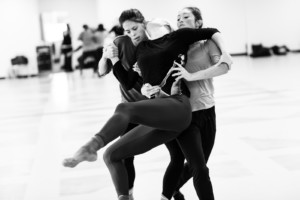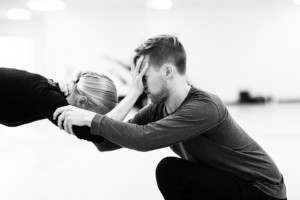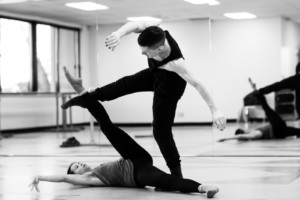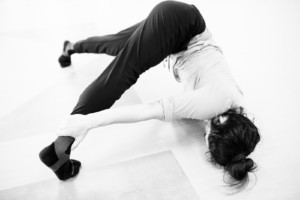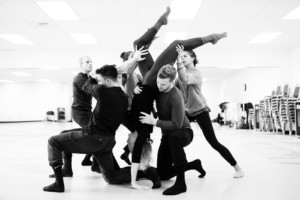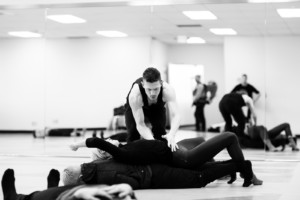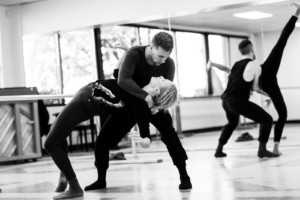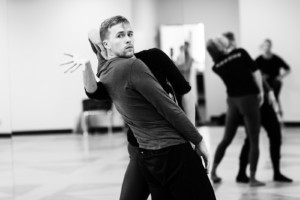Catch & Release is the working title of a new work by Whim W’Him artistic director Olivier Wevers, to premiere in the January 20-28, 2017 SENSATION program at The Cornish Playhouse at Seattle Center. When I talked to him about the projected piece in early September he was doing research for it, which meant, among other things, assembling a synopsis/collage to clarify its themes and trajectory, the core of his intentions.
Olivier gathered his ideas together in the form of a 2-page file “that I shared with my collaborators”: Composer Brian Lawlor; Costumer Christine Joly de Lotbiniere; and Lighting Designer Michael Mazzola. In the shared file (see above and further on in this post), “The red writing was guidelines for Brian to compose music. And imagery and stuff was for dancers, costume designers, etc…to understand my direction.” A sort of abstract that amalgamated notions, emotions and images, the file did not specify particular movements, combinations of dancers for the various roles or sections, or information about what would be set as solos, duets, trios and group dances. Ideas about the dance itself were still percolating and composting in other parts of Olivier’s mind. “There is a lot more research stuff that I don’t share.”
On the basis of all this preparation, when the dancers got into the studio with Olivier, there was a rich compost of ideas in his mind out of which the dancing would grow. At the first rehearsal. he told the dancers about his researches, the themes he had in mind, and some ideas about costumes and lighting.
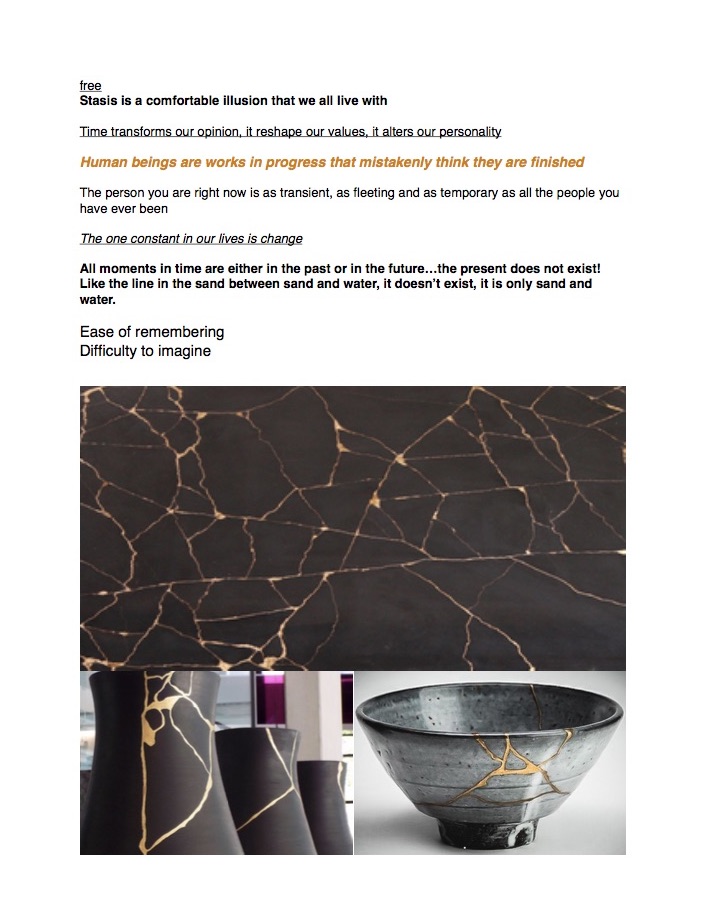 The inspiration for the costumes is Kintsugi: “The Japanese art of fixing broken pottery with lacquer resin dusted or mixed with powdered gold, silver, or platinum. As a philosophy it speaks to breakage and repair becoming part of the history of an object, rather than something to disguise.”
The inspiration for the costumes is Kintsugi: “The Japanese art of fixing broken pottery with lacquer resin dusted or mixed with powdered gold, silver, or platinum. As a philosophy it speaks to breakage and repair becoming part of the history of an object, rather than something to disguise.”
Olivier is less making a statement about the repairing of objects, however, than about necessarily fractured people and relationships—how they break and the transformations that take place in the process of putting the pieces back together again. I think that in an odd way it’s akin to the idea behind Leonard Cohen’s line, “There’s a crack in everything, That’s how the light gets in.” In Olivier’s piece, he’s visualizing “the left hand carrying grief and becoming heavy. The right hand on the other side carries gratefulness for the beauty that is alive” in the world. We hold both in our hands. Kintsugi heals and glues back together. It’s a scar, a sign of pain, only not ugly but beautiful and unique. Perhaps Olivier’s piece should be said to be a commentary on how we exist in the particularity of actual life, as opposed to the Platonic ideal—how we are so attracted to perfection which never lasts; the continual reminders of that fact; and the peculiar attraction and love we can feel for something/someone marred, as being full of life and experience.
Broken hearts —> release —> growth.
The title of the piece, Catch & Release refers to Olivier’s belief that “Ultimately, to truly love someone you have to catch them, and then let them go. We never really own anyone or thing. It’s true in all our lives. We move on. We and life are always in flux, always in motion.” A universal statement, especially relevant now.
Work in the studio began, using the music (for piano and a string trio) that Brian had sent so far. By the end of the week, Olivier had sketched out ¾ of the ±20 minute piece, which, as he says, “evolved from my research—but it’s changed since then. It’s a bit more blended now, as the original idea had very separated sections.”
So far Olivier has created a trio for the 3 women…
a duet for Tory and Karl Watson…
another for Patrick Kilbane and Liane Aung…
A solo for Mia Monteabaro…
and some group sections.
One segment of the piece is about suicide. In the throes of a dissolving deep relationship, one can feel ready to give up and get out. This part, set to the Ray Charles song that begins, “I can’t stop loving you, I’ve made up my mind,” is conceived as being at once sad and nostalgic, dark and funny.
Olivier began work on the Suicide Section by having the dancers lay each other down, “kind of mechanically helping each other to lie down. But that wasn’t right.” Then he got the idea of a more subtle, non-verbal way of giving permission to each other with a wink (as in some versions of the parlor game Murder, the murderer winks at the person who is to die), a minimally signaled assent. The wink worked. Onstage, the lighting, will mostly illuminate two feet above the stage floor. The winks will be partly hidden, but also visible—“It’s not really dark above two feet. The light bounces off the floor.”
And so work goes on…
In the meantime, Whim W’Him’s November 3 Fall Fête fundraiser raised a full 50% more than the company had budgeted for, and, Olivier says, “Contributions are still coming in. And I am still reeling from the generosity and support of my community, it is inspiring! I need to work even harder for all of them!” A cheerful note in a moment that holds much uncertainty and a reminder that art is always timely. A gold thread to bind us together.
